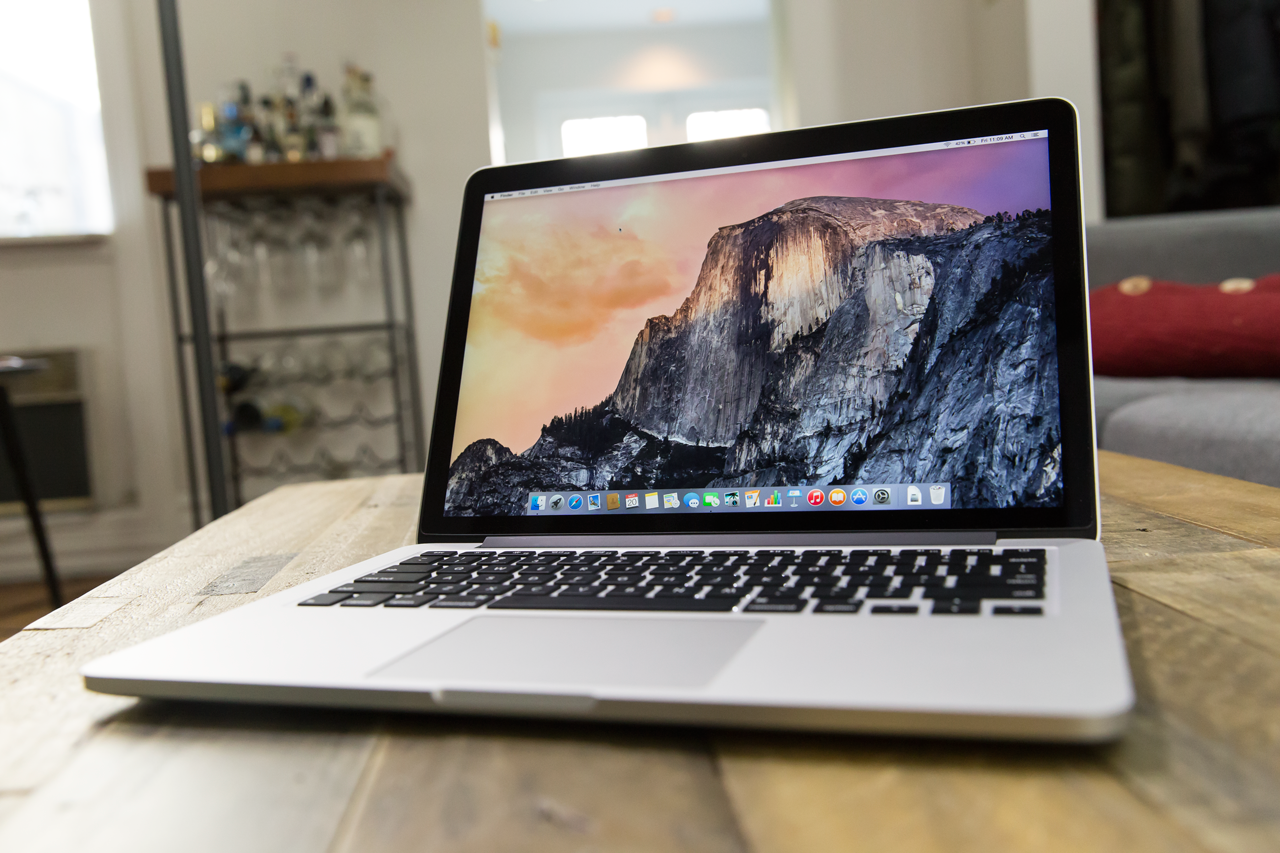

- #MACBOOK PRO RETINA 2015 RESOLUTION UPGRADE#
- #MACBOOK PRO RETINA 2015 RESOLUTION FULL#
- #MACBOOK PRO RETINA 2015 RESOLUTION MAC#
The Dell P2415Q provides the most bang for the buck
#MACBOOK PRO RETINA 2015 RESOLUTION MAC#
If you’re looking for more coverage of 4K displays, be sure to check out Jordan Kahn’s earlier breakdown of 4K displays geared towards Mac Pro users. The PLS panel used in the Samsung monitor is very similar to IPS, hence its inclusion. For instance, there are several TN panels available, but I assume that most Mac users would prefer an IPS display, like the ones found in the MacBook Pro and iMac lines. There are 4K monitors available that meet some, but not all, of my set requirements.

Of course, there may be other monitors out there, but these are the ones with which I’m most familiar.

Here are some of the available options for MacBook Pro users shopping for a 4K display that meet the aforementioned requirements: Brand/Model I have some strict requirements when it comes to the 4K displays that I’m willing to mate with my MacBook Pro. The new 12″ MacBook, for example, can drive a 4K display, but Apple says it’s only capable of doing so at 30Hz. Such a refresh rate results in a less than optimal user experience. I also can’t recommend using any display running at 30Hz. Earlier models can work with 4K, but they use MST, and I simply can’t recommend that you take that route. The main takeaway from this is that you’ll need a 15″ MacBook Pro from Mid 2014 or later, or a 13″ MacBook Pro from Early 2015 or later, in order to take advantage of 4K at 60Hz in the best way. This is particularly interesting, since the MacBook’s Air’s own screen is a “normal” low-resolution display. Notice that even the Early 2015 and later MacBook Air can get in on the action. MacBook Pro (Retina, 15-inch, Mid 2014).MacBook Pro (Retina, 13-inch, Early 2015).According to Apple, here are the Macs that can successfully drive a Single-Stream Transport 4K display at 60Hz: Not every MacBook Pro is capable of driving a 4K display using SST. I’ve had mixed results when using MST, but now that Single-Stream Transport displays are available for a reasonable price, I recommend going that route instead. Graphical glitches can occur, and you may encounter random issues and display problems that make the monitor appear as two separate displays instead of one. It works, and I can personally attest to that, but to be honest, it feels like a hack. For GPU’s that supported MST via DisplayPort 1.2, it feeds these two separate streams at 60Hz.Īs you might imagine, this is not the most ideal way to go about implementing 4K or higher resolutions into your workflow. The result was a single display broken up into two input streams of 1920-by-2160. Early 4K displays adopted a Multi-Stream Transport (MST) strategy that used multiple input controllers. Driving a 4K displayĤK monitors are still relatively new in the industry, and as such, the technology continues to mature and improve.
#MACBOOK PRO RETINA 2015 RESOLUTION FULL#
Being able to watch your 4K footage in full resolution on your display is a nice side benefit.
#MACBOOK PRO RETINA 2015 RESOLUTION UPGRADE#
The point is, if you’re used to using OS X’s default display settings, then having a 4K monitor will still feel like an upgrade in screen real estate.Īn added bonus is that iPhones and now iPads can shoot 4K video. As you can see, that’s quite a bit less than the 1920-by-1080 provided by a 4K monitor, although it is possible to set the MacBook’s display to 1920-by-1200 using the More Space option in System Preferences → Displays. With the display set as default, the available real estate ends up being half that, at 1440-by-900. Granted, you’re giving up screen real estate by running in HiDPI mode, but for the sake of your eyes, it can be worth it.Ī 15” MacBook Pro with Retina Display features a native resolution of 2880-by-1800. When running in OS X’s default HiDPI mode, the amount of available real estate is effectively cut in half, resulting in a display that feels like 1920-by-1080. It just so happens that 4K monitors have enough resolution to support HiDPI mode and still be practical for typical usage.ĤK displays support a native resolution of 3840-by-2160. Users will appreciate having a similar experience on an external display. This allows items on screen to appear larger to compensate for the smaller pixels provided on such a dense display, while allowing for tack-sharp print-like text. Since it’s enabled by default in OS X, many MacBook Pro owners with Retina displays take advantage of HiDPI mode - a setting that doubles interface element pixels on the x and y axis. Why should you consider a 4K display instead of a cheaper monitor with lesser resolution? It all boils down to clarity. If you own a MacBook Pro with Retina Display and desire extra screen real estate, then a 4K monitor can be a good investment, especially as the price of such monitors continue to dwindle.


 0 kommentar(er)
0 kommentar(er)
